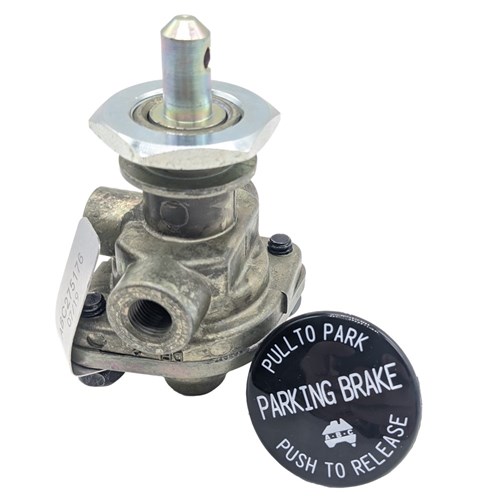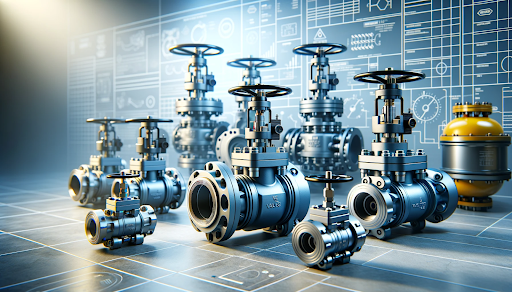Enhancing System Control with High-Performance Control Valves
Enhancing System Control with High-Performance Control Valves
Blog Article

Maximize Power Savings and Comfort With Advanced Structure Automation Controls
In the world of contemporary architecture and center management, the combination of sophisticated structure automation controls stands as a critical innovation. By taking advantage of the power of automation, buildings can adjust, respond, and develop in means that were when unimaginable.
Power Efficiency Advantages
Energy effectiveness advantages can considerably lower energy intake and functional expenses in structures. By applying energy-efficient techniques and innovations, structure owners and drivers can achieve significant financial savings while likewise contributing to ecological sustainability. Among the primary benefits of enhancing energy performance in buildings is the decrease of energy bills. Energy-efficient systems, such as sophisticated building automation controls, can optimize making use of sources like lights, home heating, and air conditioning, leading to reduced energy expenditures in time.
In addition, boosted energy efficiency can prolong the life-span of building tools and systems. By operating much more successfully, heating and cooling systems, lighting fixture, and various other building elements experience much less wear and tear, resulting in minimized maintenance and replacement prices. In addition, energy-efficient structures typically command higher home values and rental prices, providing long-lasting monetary benefits to owners.
Furthermore, power effectiveness can improve owner convenience and performance. Appropriately controlled indoor atmospheres with ideal illumination and thermal conditions produce an even more favorable and enjoyable work area, resulting in boosted employee satisfaction and efficiency. Overall, the power efficiency advantages related to advanced building automation controls are diverse, incorporating price savings, environmental stewardship, and occupant health.
Improved Convenience Control
Enhancing comfort control in building settings calls for a sophisticated combination of innovative automation systems for optimum passenger wellness. By utilizing innovative building automation controls, centers can customize the interior setting to satisfy the details requirements and choices of occupants. These systems allow specific guideline of air flow, temperature, and illumination, producing a productive and comfy ambience. Resident complete satisfaction and productivity are very closely connected to thermal convenience, making it vital to have systems in position that can adapt to altering conditions in real-time.
By including these advanced controls, buildings can not just improve convenience yet additionally boost power efficiency by maximizing system operations based on real occupancy and use patterns. Ultimately, prioritizing passenger convenience through advanced automation systems leads to an extra enjoyable and healthier indoor setting.
Functional Efficiency Improvements

Furthermore, the implementation of real-time monitoring and analytics devices makes it possible for structure operators to determine power inefficiencies and functional anomalies promptly. By continually monitoring power usage patterns and system efficiency metrics, modifications can be made in real-time to optimize power intake and ensure peak operational effectiveness. control valves. Additionally, integrating need action techniques into building automation controls can even more boost functional efficiency by dynamically readjusting energy use based upon grid problems and pricing signals
Indoor Environment Optimization
Reliable indoor environment optimization is a informative post fundamental element of structure automation controls, making certain residents' convenience and well-being while maximizing power financial savings. By utilizing innovative sensors and controls, constructing automation systems can constantly change and keep an eye on temperature level, humidity degrees, air high quality, and ventilation to create an optimum indoor atmosphere. Preserving comfortable and consistent problems not only improves occupant complete satisfaction however also improves efficiency and total wellness.
Interior environment optimization additionally plays a crucial duty in energy performance. By fine-tuning home heating, cooling, and air flow systems based on real-time information and tenancy patterns, building automation controls can dramatically reduce power consumption - control valves. For example, carrying out methods such as demand-controlled air flow and thermal zoning can aid minimize energy waste while ensuring that each area of the building receives the needed conditioning.

Sustainable Atmosphere Production
Structure automation manages not only enhance indoor environment conditions for energy efficiency learn this here now and passenger convenience yet additionally lay the foundation for producing a sustainable environment with calculated administration of sources and systems. By integrating sophisticated building automation modern technologies, such as sensing units, actuators, and intelligent software, facilities can adjust and check power usage in real-time to minimize waste and reduce their carbon impact. These systems make it possible for predictive maintenance, determining possible problems prior to they intensify and maximizing equipment performance to boost durability and efficiency.
Furthermore, lasting setting creation expands past power administration to include water preservation, waste reduction, and interior air top quality improvement. Structure automation controls can control water usage, identify leakages, and make certain appropriate garbage disposal methods, adding to general sustainability efforts. Additionally, by controlling and monitoring air flow and filtering systems, these technologies boost owner health and wellness and efficiency while reducing energy intake related to a/c operations.
Conclusion
Finally, progressed structure automation controls offer significant advantages in regards to power cost savings, comfort control, functional efficiency, interior climate optimization, and producing a lasting atmosphere. By implementing these controls, structures can accomplish optimum performance while reducing power usage and improving passenger convenience. It appears that the use of innovative automation modern technology is important in boosting structure efficiency and producing an extra lasting future.
Energy efficiency benefits can considerably decrease power consumption and operational costs in structures. Overall, the power efficiency advantages linked click now with innovative building automation controls are multifaceted, encompassing price financial savings, ecological stewardship, and occupant health.
Additionally, including need reaction techniques into structure automation controls can even more improve operational efficiency by dynamically changing energy use based on grid conditions and prices signals.
Structure automation regulates not only optimize indoor environment problems for energy efficiency and owner convenience however additionally lay the structure for developing a lasting environment through strategic administration of resources and systems.In conclusion, progressed building automation manages deal significant advantages in terms of power financial savings, comfort control, functional performance, interior climate optimization, and producing a lasting setting.
Report this page